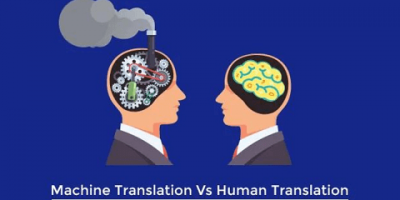Data Encryption Ecosystem is like a secret code that keeps your information safe from prying eyes. Imagine your data as a precious treasure, and encryption as the lock that only you and those you trust have the key to. In today’s digital world, where data travels across vast networks and resides on numerous devices, encryption is crucial for protecting sensitive information from hackers, cybercriminals, and unauthorized access.
At its core, data encryption ecosystem involves scrambling data into an unreadable format using complex mathematical algorithms. This scrambled data, known as ciphertext, can only be deciphered back into its original form, known as plaintext, by those with the right decryption key. Let’s delve deeper into the ecosystem of data encryption to understand how it works and why it’s essential for safeguarding your information.
Encryption Algorithms
Data Encryption Ecosystem relies on algorithms, which are step-by-step procedures for solving a problem. These algorithms dictate how data is transformed from plaintext to ciphertext and back again. There are various encryption algorithms, each with its strengths and weaknesses. Some popular ones include AES (Advanced Encryption Standard), RSA (Rivest-Shamir-Adleman), and DES (Data Encryption Standard). The choice of algorithm depends on factors like security requirements, speed, and compatibility.
Symmetric vs. Asymmetric Encryption:
Encryption can be categorized into two main types: symmetric and asymmetric. Symmetric encryption uses a single key for both encryption and decryption. It’s like having one key to lock and unlock a door. While symmetric encryption is fast and efficient, the challenge lies in securely sharing the key between parties. Asymmetric encryption, on the other hand, uses a pair of keys: a public key for encryption and a private key for decryption. It’s like having a lock with a key that can’t unlock it but can secure the contents inside. Asymmetric encryption is often used for secure communication and digital signatures.
Key Management:
Managing encryption keys is crucial for maintaining the security of encrypted data. If someone gains access to the key, they can decrypt the data and potentially compromise its confidentiality. Key management involves generating, storing, sharing, and revoking encryption keys securely. This process is essential for preventing unauthorized access and ensuring data privacy.
Data in Transit Encryption
Data Encryption Ecosystem can protect data both at rest (stored on devices or servers) and in transit (being transmitted over networks). At rest encryption ensures that even if someone gains physical access to a device or server. They won’t be able to access the encrypted data without the decryption key. Similarly, data in transit encryption safeguards information as it travels between devices or across the internet. It is preventing interception by hackers or eavesdroppers.
Application of Encryption
Encryption is pervasive across various technologies and industries. It’s used in securing communication channels, such as HTTPS for web browsing, SSH for remote access, and VPNs for secure connections over the internet. Data Encryption Ecosystem also plays a vital role in protecting stored data in databases, cloud storage, and mobile devices. Additionally, it’s used in securing sensitive information like passwords, financial transactions, and personal data.
Limitations
While Data Encryption Ecosystem is a powerful tool for data security, it’s not without challenges and limitations. One challenge is balancing security with usability. Strong encryption often comes with increased complexity, which can be challenging for users to manage. Another challenge is the potential for vulnerabilities in encryption algorithms or implementations, which can be exploited by attackers. Moreover, encryption doesn’t guarantee absolute security; it’s just one layer of defense in a comprehensive security strategy.
Data Protection Laws
In today’s regulatory landscape, data encryption ecosystem is often mandated by laws and regulations to protect sensitive information and ensure privacy compliance. Regulations like GDPR (General Data Protection Regulation), HIPAA (Health Insurance Portability and Accountability Act), and PCI DSS (Payment Card Industry Data Security Standard) require organizations to encrypt certain types of data to mitigate the risk of data breaches and unauthorized access.
Emerging Technologies
As technology evolves, so does the landscape of data encryption ecosystem. Emerging trends include homomorphic encryption, which allows computations to be performed on encrypted data without decrypting it, and quantum-resistant encryption, which aims to secure data against the potential threat posed by quantum computers. Additionally, advancements in encryption key management, such as the use of hardware security modules (HSMs) and secure multi-party computation (MPC), are enhancing the security of encrypted data.
Conclusion
Ultimately, data encryption ecosystem is a fundamental component of modern cybersecurity, essential for safeguarding sensitive information in an increasingly interconnected world. By understanding the principles of encryption, the different types of algorithms, and its applications across various technologies. Individuals and organizations can better protect their data from unauthorized access, breaches, and cyber threats. As technology continues to advance, encryption will remain a critical tool for ensuring data privacy and security in the digital age.
Read More: 5 Reasons Why Peer-to-Peer Storage is the Future of Secure Data














Comments